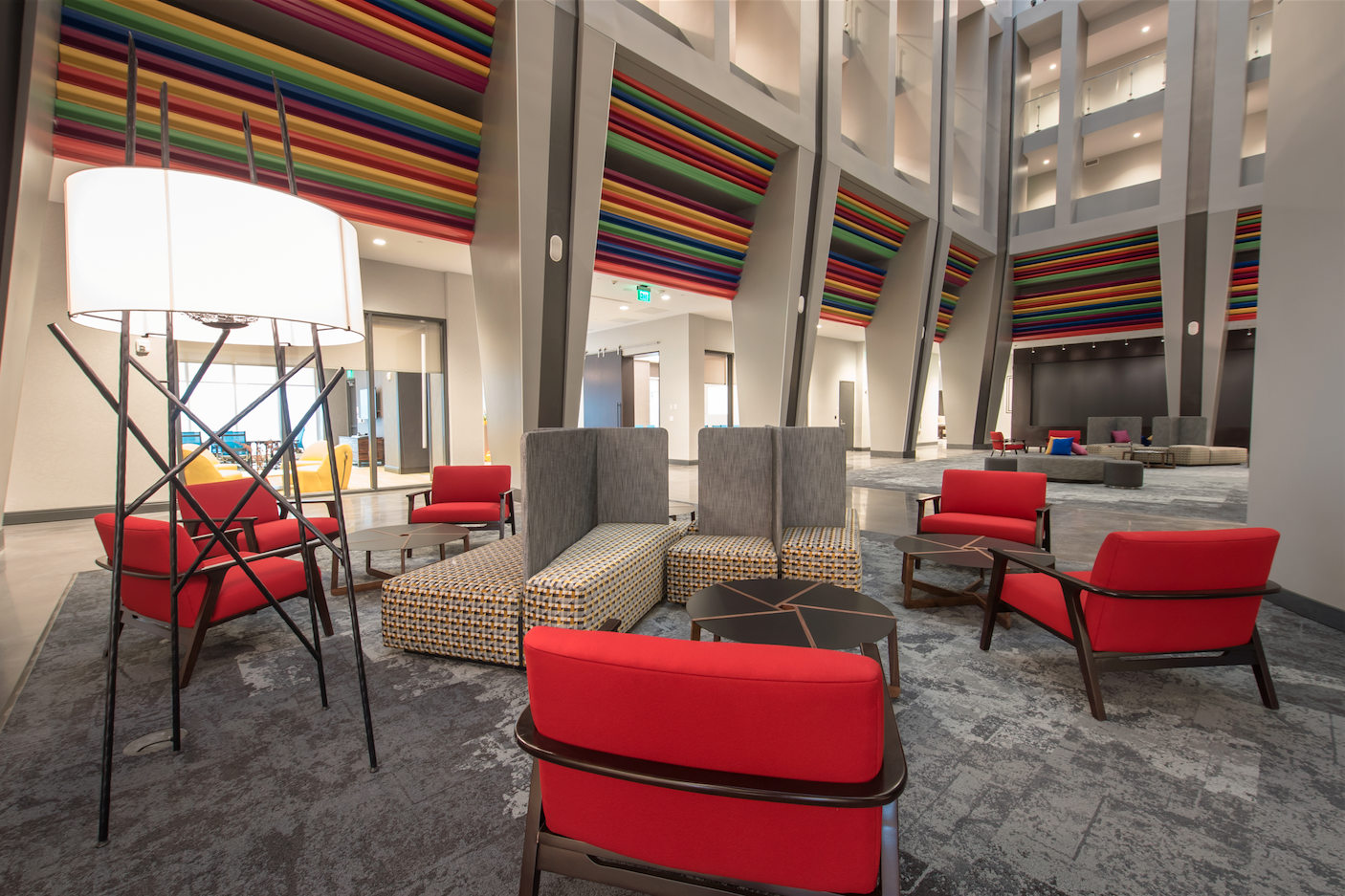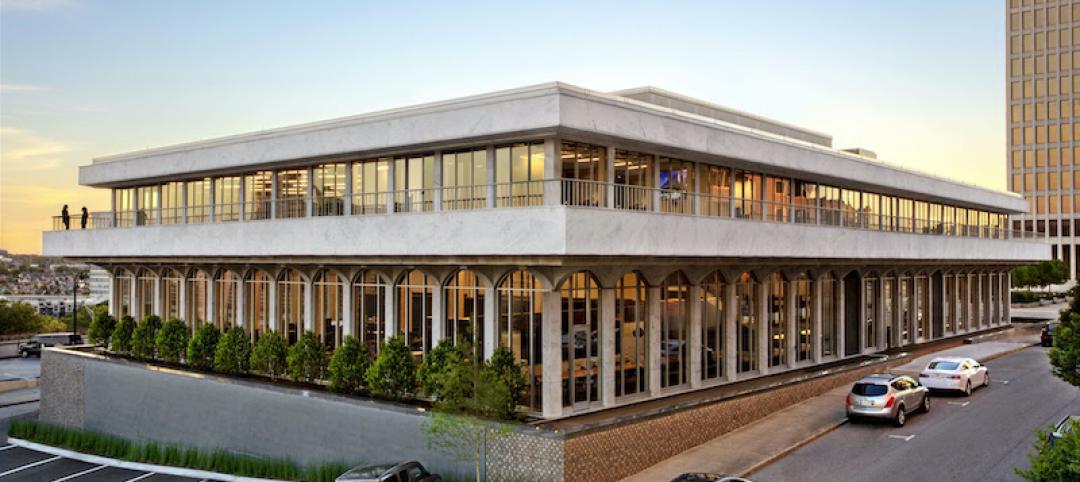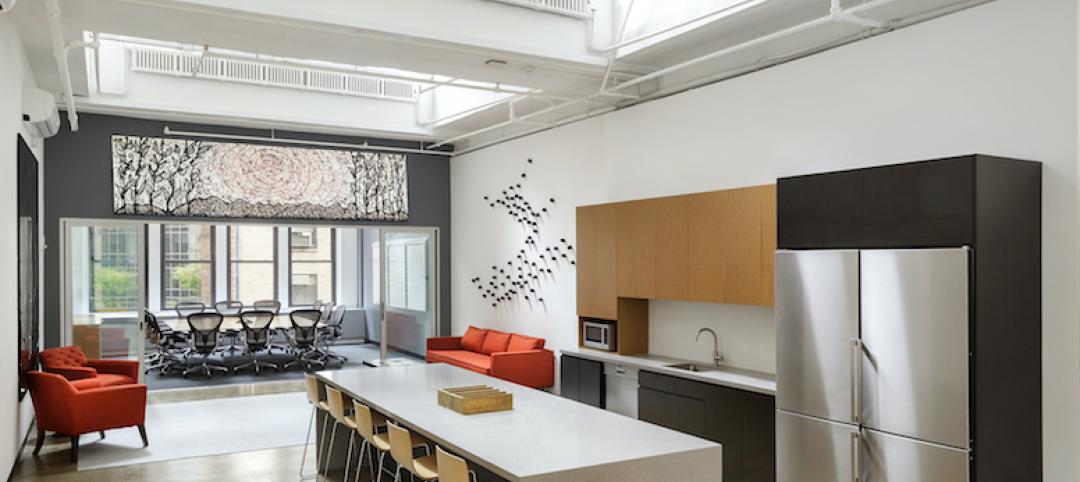It doesn’t look like much from the outside. But as they say, you can’t always judge a book by its cover.
And more interesting design flashes take over inside The Summit, A Dolce Hotel, featuring a 5,743-sf art gallery and an 11,600-sf rooftop terrace and garden space, which leads into a 4,750-sf ballroom that’s one of 19 meeting and banquet areas.
This 426,000-sf, 239-key lifestyle hotel and conference center, which opened adjacent to downtown Cincinnati on April 17, is the first hotel that Dolce Hotel and Resorts by Wyndham designed from scratch. On top of that, it’s an adaptive reuse of a parking garage that itself was once a warehouse-distribution facility.
“I think it is easily the top hotel/conference center combination in southwest Ohio,” says Chris Hopper, Executive Vice President and General Manager for Skanska Ohio, the project’s GC. RBM Development was the developer, Samach + Seo Architecture the design architect, CR Architecture & Design the AOR, and Hirsch Bednar Associates the interior designer.
Transforming a 50-plus-year-old structure into an $80 million hospitality venue, however, was not a foregone conclusion. The warehouse portion, once a NuTone factory, had been built in two stages, 1959 and 1976, and the city had no structural drawings for the 1959 work, which required the hotel’s Building Team to spend more than $100,000 on soil and load tests. Holes had to be drilled into the building’s columns to see how much steel they contained.
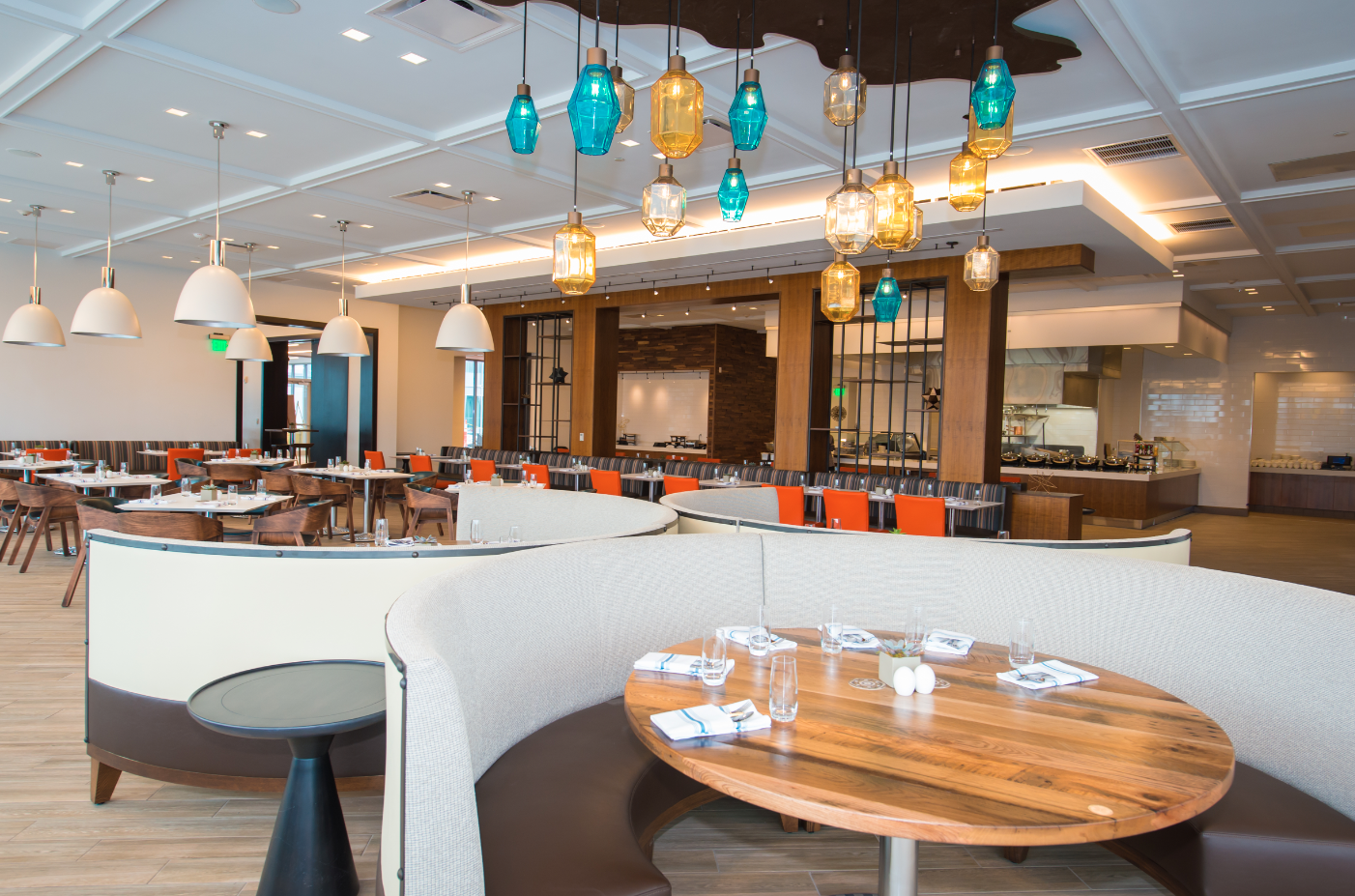 The hotel’s restaurant, bar, and conference and meeting rooms are all located on its roof terrace, which includes 19 meeting spaces with 34,000 sf. Photo: Mike Howard Photography
The hotel’s restaurant, bar, and conference and meeting rooms are all located on its roof terrace, which includes 19 meeting spaces with 34,000 sf. Photo: Mike Howard Photography
Seth Barnhard, Principal and program manager for Sitement, the owner’s rep, says there were “prolonged discussions” about whether just to tear down the parking garage and build new. “It took months of VE [value engineering] to get the cost down to where [reconstruction] made sense.”
On the plus side, the existing building offered an 85,000-sf floorplate. And the parking garage had already been stripped of its cladding to the concrete, so the Building Team pretty much knew what it was working with.
The demolition part of this job took around four months, during which Skanska cut through the structure to create the hotel’s atrium space, which was probably the most important design decision on this project.
The nine-story atrium—a first for a Dolce-branded hotel—was one of three design options that Samach + Seo presented for this project, says Raphael Samach, AIA, Partner with the New York-based firm. The atrium was selected, he explains, because it allowed the structural loads to be redistributed while giving the hotel its greatest height.
Dolce is marketing The Summit as a “lifestyle” hotel, and Barnhard says its design is meant to convey an “ongoing sense of surprise” for guests who enter through a porte cochere that leads into an art-adorned lobby—whose grey palette is flecked with color accents—and portal to the atrium with four glass elevators.
 Photo: Mike Howard Photography
Photo: Mike Howard Photography
The terrace on the roof of the hotel’s 200-slot, two-level parking deck is programmed as a destination and “oasis” for guests and visitors, says Samach. The hotel’s restaurant, bar, conference and meeting rooms are all located on the roof. Servicing the meeting rooms are nourishment “hubs,” which offer a variety of snacks and refreshments during most of the day. (The hotel has two beehives on the roof to make its own honey, and this spring intended to plant its own herb garden.)
However, Skanska still needed to install micro piles in the basement to fortify the existing building that’s supported by an unusual mixture of spread piles and piers, says Jon Budde, Skanska’s project manager.
RMB is an acronym for Red Bank Madison, a development company owned by August Troendle, CEO and Founder of Medpace, a clinical research organization. Next to The Summit, Medpace just started construction on a 250,000-sf headquarters building. The entire complex, which sites on 30 acres, will include 250 multifamily residential units, a walking path, and possibly a Food Hall.
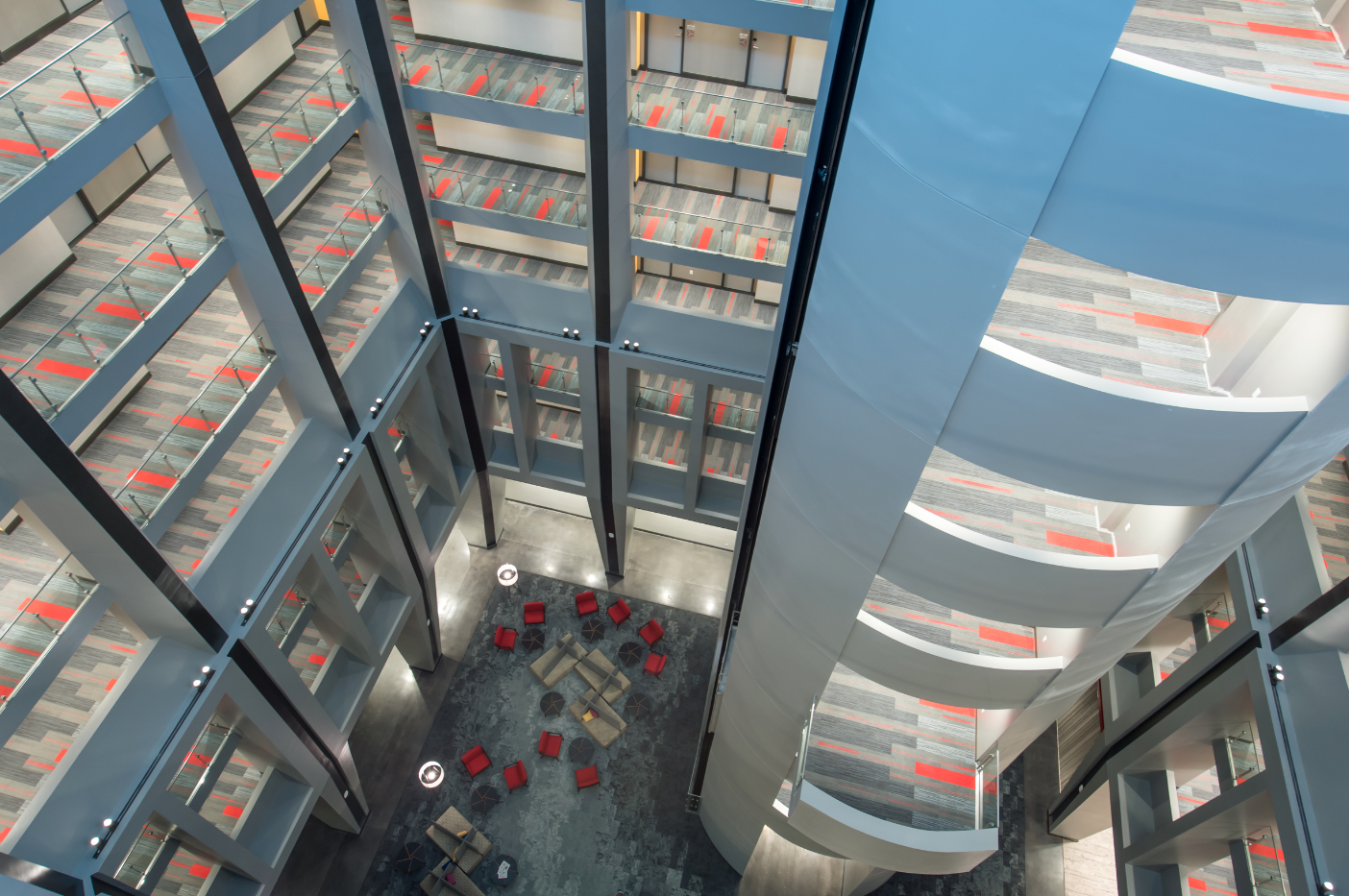 Photo: Mike Howard Photography
Photo: Mike Howard Photography
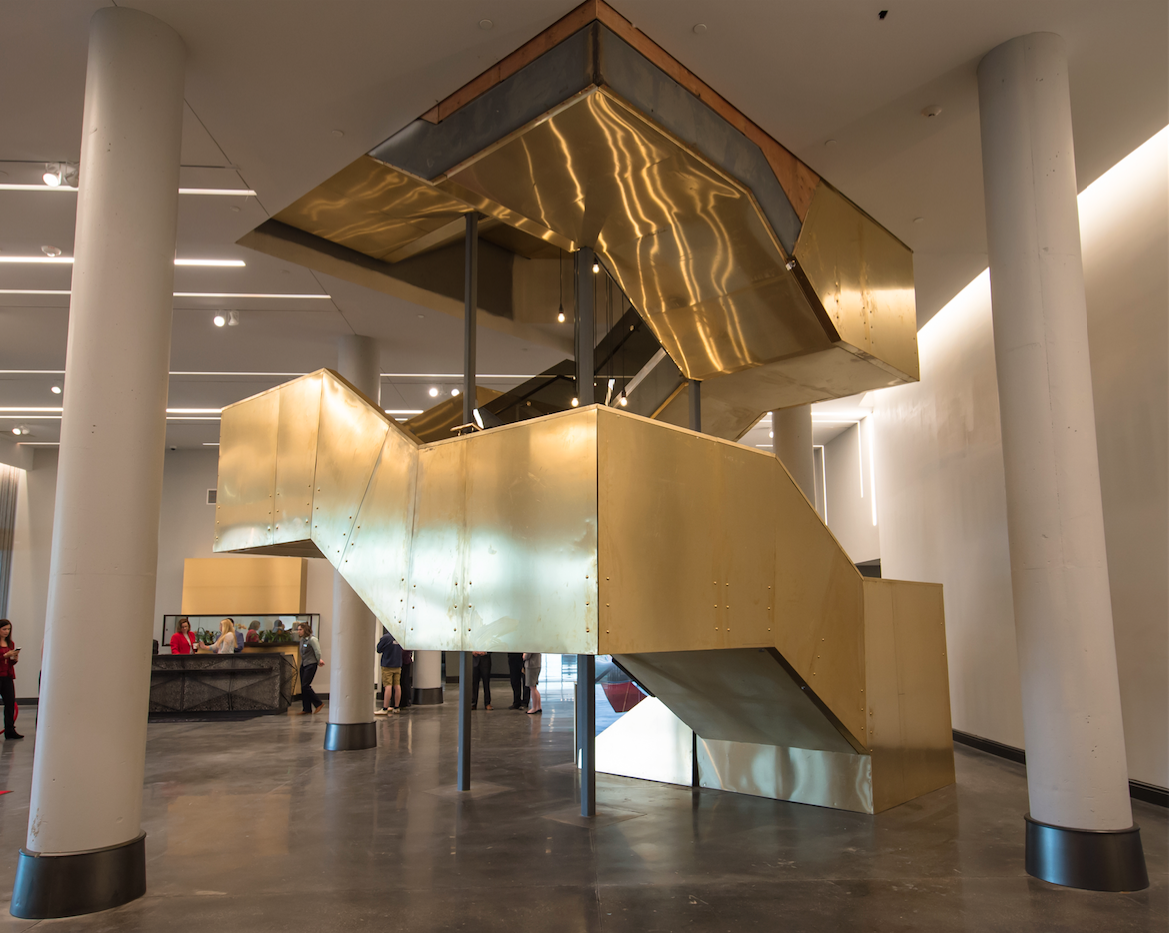 Photo: Mike Howard Photography
Photo: Mike Howard Photography
Related Stories
Adaptive Reuse | Oct 26, 2020
Mall property redevelopments could result in dramatic property value drops
Retail conversions to fulfillment centers, apartments, schools, or medical offices could cut values 60% to 90%.
Adaptive Reuse | Oct 22, 2020
A Los Angeles design firm reimagines urban workplaces, multifamily buildings, and warehouses
Omgivning conjures varieties of adaptive-reuse concepts.
Adaptive Reuse | Jul 29, 2020
Two Indianapolis schools find new digs in a long-dormant factory
Adaptive reuse preserved many of the building’s original features.
Coronavirus | May 18, 2020
Will empty hotels provide an answer for affordable housing shortage?
A Los Angeles-based startup sees the Midwest as most fertile for adaptive reuse.
Adaptive Reuse | Feb 25, 2020
Hastings Architecture creates its new HQ from a former Nashville Public Library building
The building was originally constructed in 1965.
Mixed-Use | Jul 18, 2019
POST Houston mixed-use development will include a five-acre “skylawn”
OMA is designing the project.
Multifamily Housing | Jun 17, 2019
Boston multifamily development combines a historic warehouse with a new, modern addition
The Architectural Team designed the project.
Adaptive Reuse | Jun 11, 2019
The power and possibility of adaptive reuse
Building reuse generally offers greater environmental savings than demolition or new construction.
Office Buildings | Jun 6, 2018
Final Cut: Jupiter Entertainment’s new production studio in New York combines office and editing spaces
The project team completed this full-floor renovation in four months.
Adaptive Reuse | Jun 4, 2018
Pop-up retail market on Chicago’s Randolph Street will be made of repurposed shipping containers
Related Midwest will open the market at 725 W. Randolph St. later this week.


